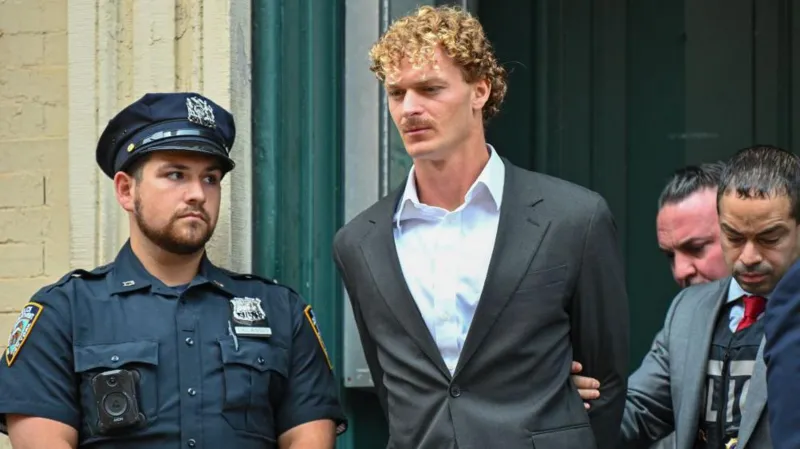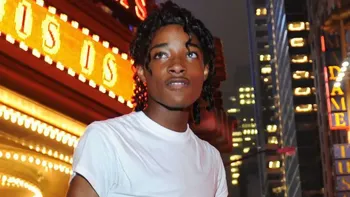Trial Begins in High-Profile Case of Jordan Neely's Subway Chokehold Death: A Deeply Divisive Incident
The highly anticipated trial of Daniel Penny, a former U.S. Marine charged in the chokehold death of Jordan Neely, has officially begun, drawing significant attention across the country. The tragic incident, which occurred in May 2023 on a New York City subway, has become a flashpoint for discussions on race, mental health, vigilantism, and public safety. Penny, 25, faces charges of second-degree manslaughter and negligent homicide after he allegedly restrained Neely, a 30-year-old homeless man, in a fatal chokehold. Penny has pleaded not guilty to both charges.
Background of the Incident: A Subdued Commute Turns Tragic
The altercation occurred during a typical subway ride when witnesses reported Neely, a black man, shouting and asking passengers for money. Known for performing as a Michael Jackson impersonator, Neely had struggled with mental health issues for over a decade following his mother’s violent death. On that fateful day, his outbursts included distressing comments about hunger and despair, but there was no physical aggression toward passengers.
Daniel Penny, a white Marine veteran, intervened, claiming he was acting in self-defense to protect other passengers, including women and children. Penny placed Neely in a chokehold, which, according to prosecutors, lasted for over six minutes—well past the point when Neely ceased to resist or move. The encounter, captured on video by fellow subway riders, shocked viewers and quickly went viral, sparking nationwide debate.
Emergency personnel were unable to revive Neely, and he was pronounced dead at the hospital. The city’s medical examiner later ruled the cause of death as homicide due to compression of the neck. Penny’s actions, which he insists were meant to protect others, led to his arrest and indictment. If convicted of manslaughter, Penny could face up to 15 years in prison.
Divisive Public Reaction: Hero or Vigilante?
The case has polarized public opinion, with reactions falling sharply along ideological lines. Many conservatives have hailed Penny as a hero who acted decisively to protect innocent bystanders. They argue that, in a city grappling with growing homelessness and mental health crises, Penny took necessary steps to ensure the safety of others on the subway. On the other hand, civil rights groups and critics assert that Penny acted as an unauthorized vigilante, using excessive and unjustified force that resulted in a tragic and avoidable death.
The death of Jordan Neely has also reignited broader conversations about the treatment of homeless individuals, particularly those with mental health conditions, and the role of bystanders in dangerous situations. Protestors, including civil rights activists, have been vocal outside the courthouse, demanding accountability and justice for Neely. A gathering of approximately 40 protestors was seen ahead of the trial’s opening, illustrating the deep emotions this case has stirred across the community.
The Trial: Key Details and Jury Selection
The trial, held in Manhattan Criminal Court, is expected to last approximately six weeks. On the first day of proceedings, Penny arrived wearing a blue suit and sat beside his attorneys, maintaining a composed and silent demeanor. Judge Maxwell Wiley, presiding over the case, announced that jury selection would begin with the voir dire process, where potential jurors are questioned to assess any biases or preconceived notions they may hold.
This part of the trial is crucial, given the high-profile nature of the case and the intense media scrutiny. Jury selection is anticipated to take several days, with the trial slated to begin in earnest shortly after. The prosecution will aim to prove that Penny’s actions were reckless and resulted in an unnecessary loss of life, while Penny’s defense team is expected to argue that he acted in the heat of the moment, fearing for his and others' safety.
Chokeholds and the Law: A Heated Debate
Penny’s trial unfolds against the backdrop of heightened awareness and concern about the use of chokeholds in law enforcement and civilian interventions. The controversial technique has long been under scrutiny, especially following the 2014 death of Eric Garner, an unarmed black man who died after being placed in a police chokehold during an arrest in Staten Island. Garner’s death, ruled a homicide, led to widespread protests and new legislation in New York banning the use of chokeholds by police officers.
In the years since, these laws have been expanded to cover civilians, as seen following the 2020 death of George Floyd in Minneapolis, another unarmed black man who was killed after a police officer knelt on his neck for more than nine minutes. Penny’s defense will likely hinge on whether the jury believes his actions were a justifiable response to a perceived threat, while the prosecution will emphasize that Neely’s death was preventable and should have been avoided.
Mental Health and the Legacy of Jordan Neely
At the heart of this tragic case is the story of Jordan Neely, whose life spiraled into mental health struggles following the brutal murder of his mother when he was just a teenager. Family members have spoken out about the severe trauma Neely endured, which left him with significant emotional and psychological challenges. Neely had been arrested multiple times for various non-violent offenses, including evading fares and minor theft, but his erratic behavior on the subway was often a cry for help.
His death has highlighted the inadequacies in mental health care and support for homeless individuals, particularly those dealing with unresolved trauma. Advocates argue that more resources should be dedicated to addressing these issues and preventing situations like Neely's death.
A Verdict That Will Resonate
As the trial moves forward, its outcome will likely have far-reaching implications, not only for Daniel Penny and Jordan Neely’s family but also for New York City’s approach to mental health, homelessness, and public safety. Whatever the jury decides, this case serves as a stark reminder of the complexities surrounding human interaction, societal protection, and the consequences of actions taken in moments of fear.

